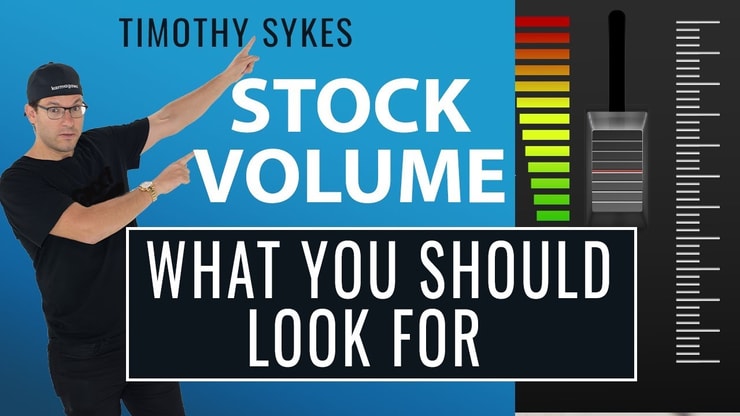The cheapest way to buy Amazon (AMZN) stock is by learning how to execute your Amazon trade well. In this guide, I’ll tell you just how to do that!
Sounds like a tall order? It doesn’t have to be. Tens of thousands of people do it everyday.
I teach new traders everything I had to learn for myself when I started trading. That’s why I’ve written a beginner’s guide to the most affordable way to buy Amazon shares.
I wouldn’t exactly call Amazon stock “cheap.” But if the price keeps increasing the way it has the past 10 years, its current price is going to seem like a bargain!
How to Buy Amazon Stock (NASDAQ: AMZN)

2025 Millionaire Media, LLCHere’s how to buy Amazon stock.
1. Get a Good Broker that Lets You Trade Amazon Stock
This is the first step to buying any stock.
Choosing a broker isn’t the hardest thing. Here’s what I look for:
- Low commissions and fees
- Fast trade executions
- Access to a wide range of stocks
- Good customer service
- A great trading platform
My personal pick for the last item is StocksToTrade. StocksToTrade integrates with most of the top brokers, and it’s hell on wheels for the things traders really care about.
It should be good for trading — I helped build it.
StocksToTrade has dynamic charts, a selection of pre-built stock screeners, awesome add-on alerts services, and more. It has everything I use to trade in one easy place.
Try StocksToTrade today — only $7 for a 14-day trial!
2. Determine Your Goals and Your Risk
Every trader wants to make money — but unless you have a clear idea of your goals you probably won’t achieve them.
Some traders are looking for short-term gains. Others want to invest for retirement.
If you’re an active trader, the 100% annual return Amazon has had for the past 10 years might not be enough for you. I look to make 5–10% per trade. Most of my trades take only minutes.
Many long-term traders and investors are looking for exactly the kind of chart Amazon has. Amazon stock is what is called a “growth stock.” That means it has a track record of growth, which is usually a good sign for future gains.
The flip side of this is volatility. Make sure you only risk what you can afford to lose.
More Breaking News
- Strategic Collaboration with TAE Power Solutions Sparks Optimism for MARA
- VOR Biopharma Sees Stock Surge Amid Strategic Developments
- Albion Resources Shares Surge as Drilling Commences in Yandal West
3. Do Your Research Before Buying Amazon Stock
There are several ways to research stocks.
First, there are indicators of the company’s value, like its sales figures, debt, and more complicated indicators like price-to-earnings (P/E) ratio. These indicators all fall under the category of fundamental analysis.
Short-term traders tend to look at charts more than fundamental indicators. Short-term price moves and volatility tend to relate more to market sentiment than the stock’s “real” value.
This is called technical analysis. It sounds complicated, but it doesn’t have to be.
I tell my students to pay attention to volume. This is one of the best indicators of an upcoming price move.
I also pay attention to news. The value of Amazon stock is heavily tied to future growth projections. News can really affect this perceived value.
4. Have a Trading Plan
After you’ve done your research, you should have an idea of what you should pay for Amazon stock, and how much you want to profit off of your trade.
Having a concrete trading plan is the best way to keep from overpaying for Amazon stock.
Write down your preferred entry, and how much of a win you’re targeting.
You also need to define your risk. If the stock price falls below your risk — that’s the point you have to cut your losses!
Without a trading plan, you’re just gambling. That’s a good way to lose your trade.
If all this sounds overwhelming, I get it. That’s exactly why I created my Trading Challenge.
In the Trading Challenge, I teach students all the things I had to learn for myself. Things like creating a good trading plan and executing it well.
You don’t have to go it alone. If you’re willing to put in the work, I’m willing to help you grow into the best trader you can be.
If you think you’re ready to give your all, apply to my Trading Challenge today.
5. Enter Your Amazon Stock Order
Trading is 90% preparation. Now that the hard part is over, it’s time to place your Amazon stock order.
Here’s the step-by-step:
- Always use a buy-limit order. Market orders can execute for any price. This is not the cheapest way to buy Amazon stock — and it can be dangerous in stocks with less liquidity than Amazon.
- Cut your losses quickly. As soon as you hit your risk you NEED to exit the trade. Your number-one job is to protect your account. If a trade isn’t going your way, there’s a poor chance that it will course-correct at the last moment.
- Don’t get greedy. You always want to sell into strength. The way that I’ve made $7.4 million in my 20-plus years trading is by going for singles. That’s the best way to become profitable that I’ve seen in all my experience trading.
Should You Buy Amazon Stock?

2025 Millionaire Media, LLCYou should buy Amazon stock if it fits your trading goals, and your research indicates that there’s an opportunity.
Through much of 2020 and 2021, Amazon stock was at all-time highs. In June of 2022 it did a 20-for-1 split, which led to a quick bump… then a slide of nearly 40% to end the year.
It climbed nearly 50% through the first five months of 2023. With a recent announcement that Amazon may start offering wireless services, there might be more growth in store.
There are other growth stock options out there! Check out our guides on the cheapest way to buy Apple (AAPL) stock, Walmart (WMT) stock, and Tesla (TSLA) stock.
Pros of Buying AMZN Stock
There are a number of advantages to buying Amazon stock.
- E-commerce and Cloud Computing Sector Leader: Amazon leads the market for two of the most important sectors in the modern world.
- Diverse Offerings: Amazon’s e-commerce dominance has paved the way for its diversification into entertainment, product distribution, and more.
- Expansion is always on the Horizon: Healthcare and telecom are new sectors with big growth opportunities. Expansion into new countries is always on the agenda, as well as increasing offerings for existing markets.
Cons to Buying AMZN Stock
Here are the cons you should weigh when making this decision…
- Regulator Concerns: Is Amazon too big? Any company that has as much power and market dominance as Amazon is a threat to come under regulatory scrutiny.
- Logistical Challenges: Amazon’s U.S. business benefited from an advantageous arrangement with the USPS. Will it find the same angles as it sets up shop elsewhere?
- Intense Competition: Amazon isn’t the only game in town. Its rivals include Walmart in retail, Google and Microsoft in cloud services, and Netflix in streaming services. None of these companies are taking Amazon’s market share advantage passively.











%20Stock&.yp=10148622&f=https%3A%2F%2Fwww.timothysykes.com%2Fblog%2Fhow-to-buy-amzn-stock%2F&enc=UTF-8&yv=1.16.6&tagmgr=gtm)
Leave a reply